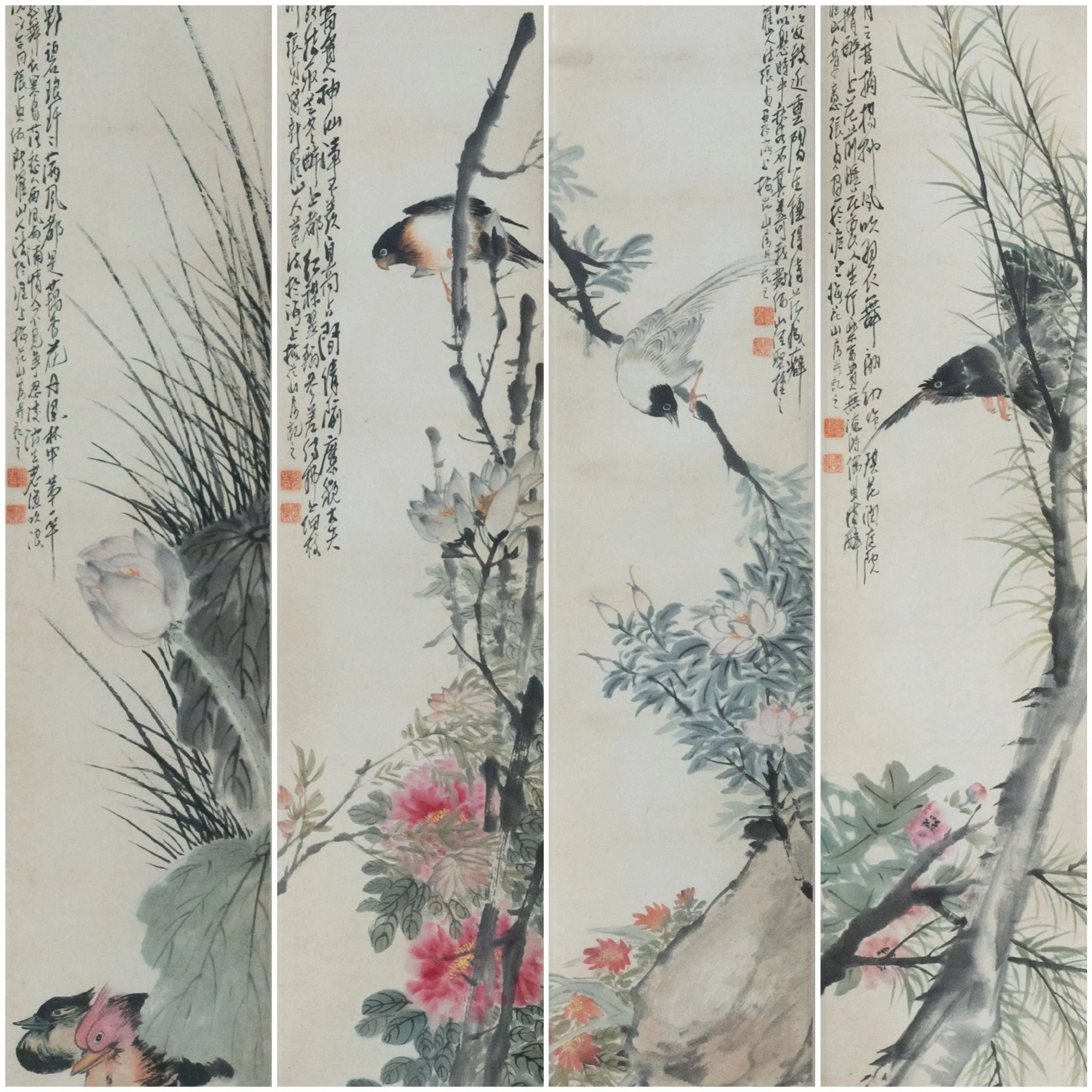
- Details & Dimensions: 8" W x 57" H
More from RM Collection
Zhang Zhen, known by the courtesy name Tiepiao and the artistic pseudonym Yunchao, was a distinguished painter from the Qing Dynasty, hailing from Wu County, which is today's Suzhou in Jiangsu. Zhang's artistry was deeply rooted in the traditional principles of Chinese painting. He was adept at crafting landscapes and figures, but his true forte lay in the realm of flowers and birds.
Initially, Zhang's style was influenced by the works of Lu Baoshan. However, as he matured as an artist, he began to draw inspiration from the great masters of the Song and Yuan Dynasties. With a clear mind and a dedicated spirit, Zhang pursued the elegance of ancient art, earning him widespread acclaim and the title of the foremost artist in the Wu region.
However, life took a turn for Zhang in his middle years. Stricken with a chronic ailment, he sought solace in tranquility and introspection. This period of his life saw a profound shift towards Buddhism. Zhang's devotion to his newfound faith was evident in his works, as he frequently painted Buddhist images, especially during the new moon and full moon, seeking alms and support for his religious endeavors.
Despite his deep-rooted traditional influences, Zhang's art was versatile and dynamic, never confined to a single style or approach. His contemporary, Ding Nanyu, acknowledged Zhang's unparalleled prowess, asserting that few could match his artistic brilliance. Tragically, Zhang's life was cut short, and he passed away in his fifties, leaving behind a legacy celebrated in writings such as "Molin Jinhua" and "Gengyan Tianzhai Notes."
In essence, Zhang Zhen's life and artistry encapsulate a journey of passion, introspection, and unwavering dedication to the craft, making him a revered figure in the annals of Chinese art history.



